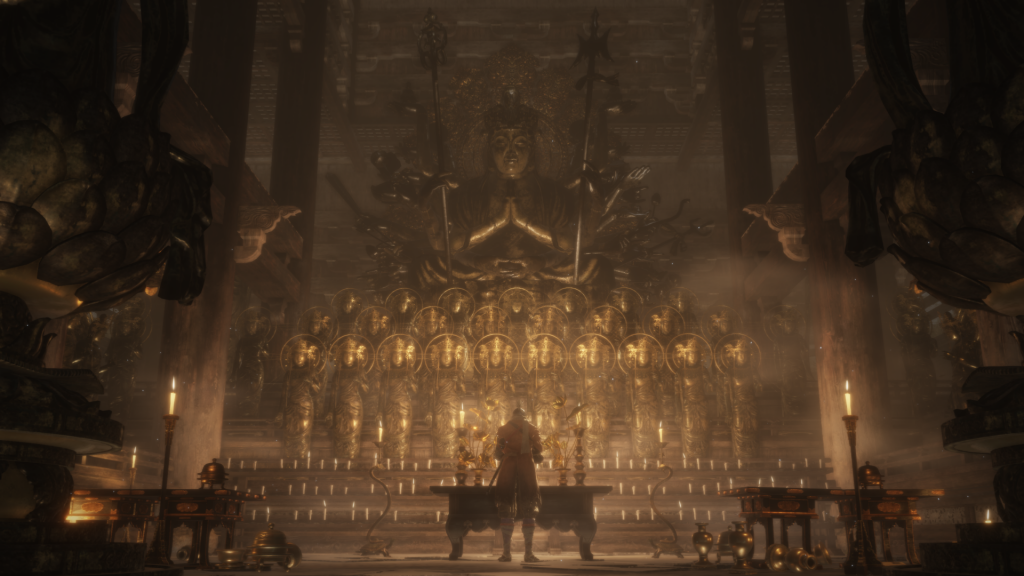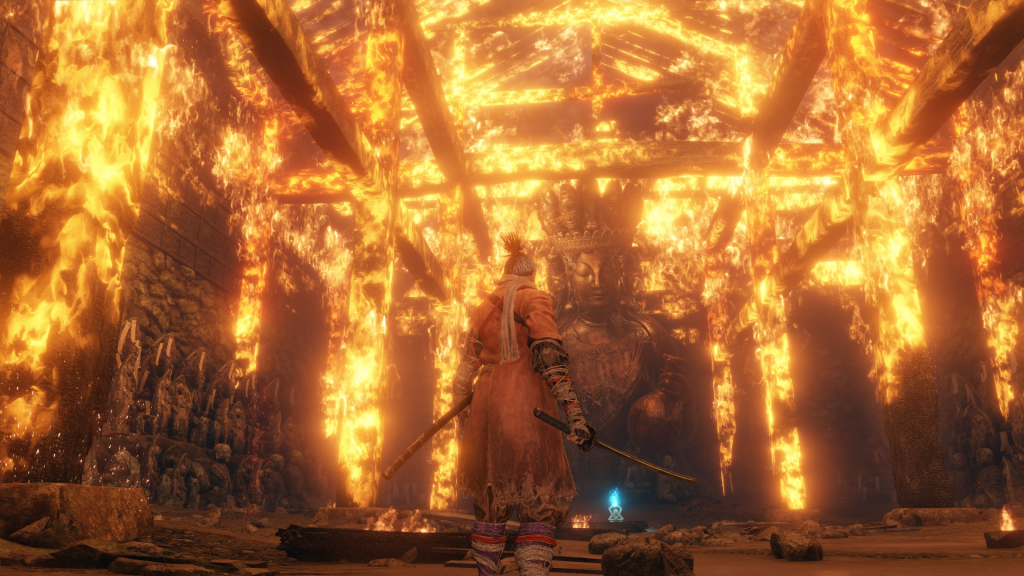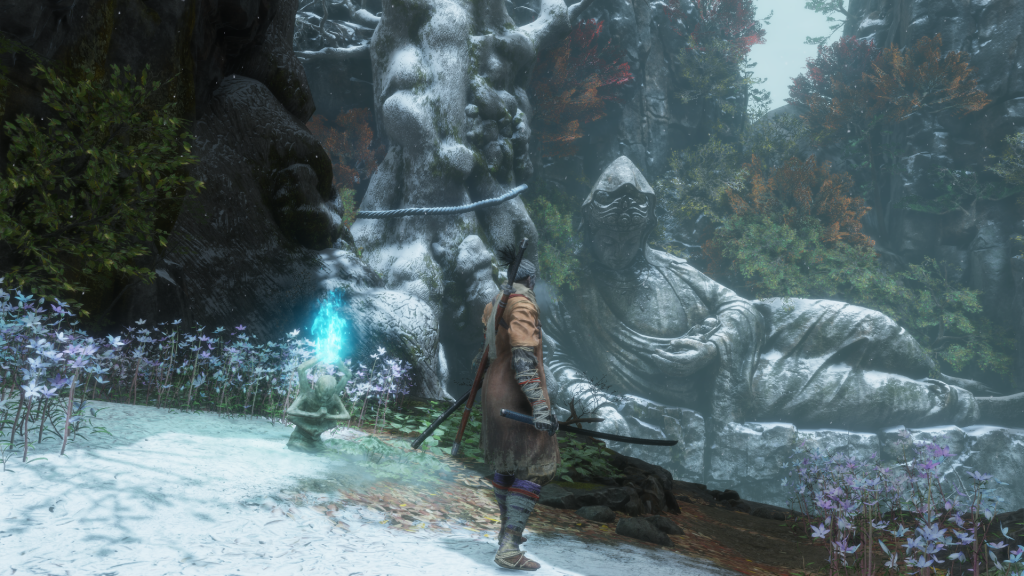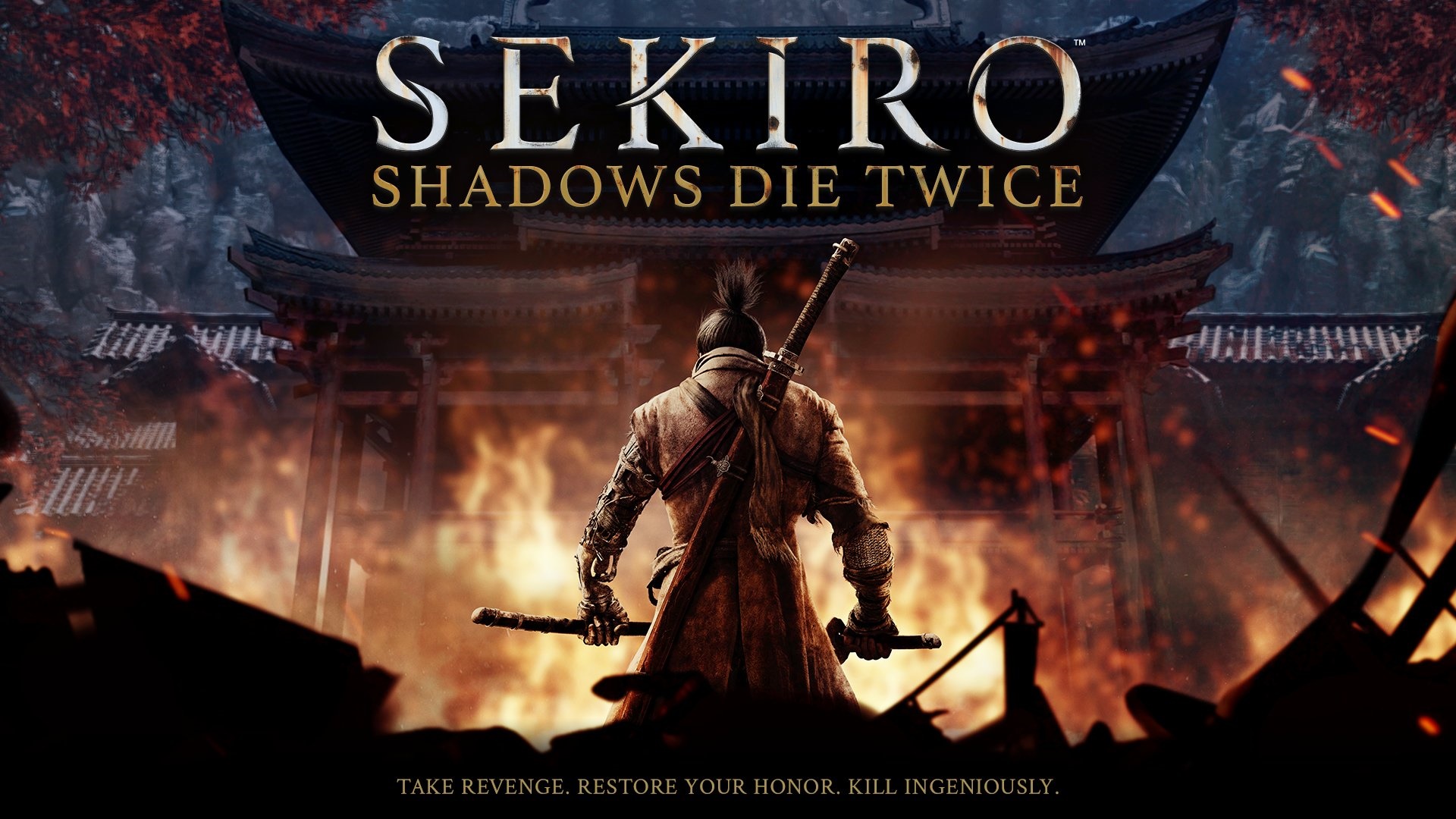Developed By: FromSoftware.
Published By: Activision
Platforms: PS4, Xbox One, PC
Reviewed On: PlayStation 4 Pro
Sekiro: Shadows Die Twice (or in my case, definitely more than twice) is a Soulsborne type Action-Adventure Game by the annoying but legendary studio, FromSoftware. At first glance, Sekiro is similar to Bloodborne or any Souls series but in fact, they are not nearly identical. I’ve written down my first impression of the game after playing it for 24 hours and in this article, I’ll break it down even further to constitute my review of the game.
But before I go further, let me just pick a piece I wrote in the impression piece that shows my colourful history with games of this genre. Here is my impressive resume;
- Bloodborne – I never got past the first boss. Sold the game to someone else 2 weeks later. Yes, I was stuck in that stage for 2 weeks.
- Dark Souls 3 – I convinced myself I wasn’t going to let my failures in Bloodborne to determine who I am and that I shall prove my potentials in this game. I went and bought the Collector’s Edition, yeah, shit got real back for me back then. I fought bravely, slew a few bosses, and then I met the Abyss Watcher. It took me one month to beat him, and after I did, a friend of mine told me there was some nameless dude I was bound to meet who is more powerful than Abyss Watcher. I decided life was too short and that I’ve proven myself enough. #praisethefuckingsun
- Nioh – Suddenly, everyone and their mothers decided to make games like this and I have no idea why. I gave it a go anyway, how hard can it be right? I am a self-proclaimed Dark Souls veteran after all. I never got past the first village. Sold the game after 1 week. The game was obviously designed to keep players like me away. 10/10 will never play again. #Justwhenithoughtiwasgettingbetter
[embedyt] https://www.youtube.com/watch?v=OqsJSeJ_0kU&width=720&height=405[/embedyt]
Let’s Go Sekiro!
It is worth noting that I have tried this game before albeit briefly at a PlayStation hosted event for the media, and I had loads of fun rope rappelling myself with the Shinobi Prosthetic Arm. Needless to say, I looked forward to doing that again when I got the full game to review. Let’s Go Sekiro! Was what I shouted in my head when I jumped off a cliff (I thought I could hook my rope to a tree branch I saw hanging out) before plunging to my death. Turns out, I should have just followed what the tutorial said and wall hugged my way through the edge of the cliff because I haven’t unlocked the required tool yet to be doing a Japanese Tarzan.
Here’s a tip – Never ever act too smart, too hasty, too stupid, and do something without thinking and planning ahead carefully. It would only result in certain death in this game. – This principle would remain true and absolute throughout my entire gameplay, and yours too if you are already playing, or decided to buy after this.
Story
Sekiro: Shadows Die Twice takes place in a fictional universe during the Sengoku era (1467 – 1615) in Japan. The main highlight of this era is an almost endless civil war between different warring factions and the game’s Social, Geographical, and Political scenes are set in this theme. The story in Sekiro is rather straight forward and doesn’t waste time beating around the bush. You are an orphan of war and got adopted by a Samurai who then raised you to become a Shinobi. Your life only has one purpose, to protect and serve your lord at all possible cost. As it turns out, your lord now is a kid who is being held hostage by a warring faction intent of using his divine blood for their own purpose. You set out to rescue him and in your journey of doing so, unfold a bigger secret that is both tied to the past and present.
In terms of story-telling, there isn’t much to talk about. Just like other Soulsborne games, dialogue with the NPCs is scarce, but meaningful when you do come across one. Then again, FromSoftware isn’t really famed for their storytelling, rather, it’s the brutal gameplay mechanism they are notoriously known for. Even so, I’d highly encourage players to explore every side quests they possibly can, you’d never know if completing a quest will grant you a new Skill Tree.

Gameplay
Leave your phone close to you when you play this game. Turn on your Spotify or Apple music and put ‘Stayin Alive by Bee Gees’ on endless repeat because you’re gonna need this to constantly remind yourself to stay alive. – Zozi, a Sekiro noob.
Most of the gameplay experience in Sekiro revolves around combat itself. You can rest assured that FromSoftware put in a great deal of effort to ensure their trademark “Brutal Combat” system remains intact in reputation. But even so, Sekiro sets itself apart from its sister games in the Soulsborne series by adopting more traditional RPG elements into the game but employs them differently. In their bid to make Sekiro more interesting, the developer added several elements that ensured Sekiro’s combat experience really shines;
There is the “Posture” element, a gauge bar that fills up every time you attack an enemy or deflect their attacks. If the attack stops, your enemy’s posture will slowly recover again. Filling up the bar opens up a chance to deal a “Deathblow” (a devastating one hit kill attack) to your enemy. There are enemies where it’s easier to chip off their HP directly, bit by bit, since staying close enough to them to consistently attack them is not an option. And there are those who give you plenty of chance to fill up their posture bar leading to a Deathblow opportunity.
There is the “Shinobi Prosthetic” secondary weapon, a prosthetic arm that comes equipped with ninja tools that assists you in battle. There are several of them, and all of them are unique in nature and useful in different situations. While their existence really helps in some fights, they are not mandatory. Again, this shows how versatile the gameplay can be. You can do things a certain way to get a certain result, but more often than not, there are other ways to do it.
There are Unblockable Attacks, where an enemy may present an attack that is not possible to block and is only possible to avoid by responding with the correct means of dodge or parry. This is signaled by a coloured icon before the attack happens. Depending on the icon and the stance your enemy adopts, the player must dodge by jumping up or backward, (if it was a sweeping attack), or sidestepping (if chopping/hacking attack), or countering a thrust attack. As much as I hate this mechanism because I died so many times to it, I still appreciate how it makes the battle more alive and interesting.
There is the Skill Point/Skill Tree system, it rewards players with one skill point each time the experience bar is filled up. Skill points can then be invested into whichever Skill Tree and there are several of them that a player can unlock depending on their progression and completion of certain side quests. Each Skill Tree offers a mixture of Passive Skills that gives dormant buffs/perks, or Active Skills called Combat Arts that can be used as a skill during combat. These so-called Skills are not mandatory, but they make things easier and opens up the game for experimentation for those who are adventurous. If you ever get stuck and feels the need to learn more skills, you can grind for more skill points before progressing.
There is the Stealth system, that really caters for players with the gut size of a chicken like myself. Approaching an enemy (even mini-bosses) stealthily to land a cheap Deathblow first before anything else, is possible. I sometimes feel like I was in an Assassin’s Creed game but I’m not complaining. If anything, this feature only served to enhance the already expansive freedom accorded by the game. You can really play it however you want, just don’t die.
All of the above made Sekiro a really unique Action RPG game but a difficult one to master. However, the nature of the whole combat system itself is actually pretty simple – It’s just a huge Rock, Paper, and Scissors game. But ever wondered why everyone is telling you the game is not easy? It is the pace of which you are required to keep up with. Sekiro is a fast pace game and even if an enemy shows their hand first, you only have a split second to decide and respond correctly. Most players, including myself, would end up fighting a Rock with a Scissor simply because we couldn’t read the move in time, or we read it but just failed to respond accordingly.
For those who are worried about getting stuck not being able to beat a boss, the game offers plenty of opportunities to explore and do something else to beef up your character. I’ve taken such a vacation many times just to explore some sub-areas and fight optional bosses to get rewards that would eventually help my character grow stronger. This is also the main reason why I’ve continued to play this game despite its difficulty. The game didn’t make me feel like my progression is halted, and that there’s something I can do to increase my chances before challenging the boss again.
Comparison to Dark Souls and Bloodborne.
Dark Souls, Bloodborne, and Sekiro are all games of the same genre but each with their own unique traits and combat mechanics. Although similar, they are not quite identical to each other, hence why some people who enjoy Dark Souls, may not necessarily like Bloodborne, and vice versa. Sekiro adopts a faster-paced combat system compared to those two, so in a way, many would feel that Sekiro is the easier game to play. Being able to attack, dodge, run away faster simply gives you more options when you wish to retreat from a fight. Stealth gameplay, being able to perform Deathblows, the vast arsenal at your disposal, resurrecting yourself after death, all makes Sekiro a more forgiving experience compared to its brutally punishing Soulsborne sister games. In fact, the part where we’re allowed to revive ourselves feels more like a handicap than a proper game feature.
Graphics.
In my impression piece, I mentioned that the graphics did not wow me and that the game looks almost identical to Nioh’s. I take that back now. Because ever since I progressed further in the game, I’ve had the luxury to feast my eyes on the bountiful landscape and architectural design offered by the game. Fighting on Rooftops, Mountains, Valleys, Castles, Temples, and many more, Wow! The landscape backdrops are often beautiful to look at, as with the overall amazing world design. The character design of the protagonist is just so-so in my opinion, the developer wanted to go for a rugged Sengoku era Shinobi look, but ended up with a katana-wielding middle-aged homeless beggar look. The character design of other NPCs, however, is absolutely amazing and creative!

In terms of framerates and the overall animation smoothness of the game, I find them good. I’ve not experienced any frame drops in my gameplay so far but it is worth mentioning again that this game was played and reviewed on the PlayStation 4 Pro, so I can at least assure the same performance for those who play on the same console. The game comes with an HDR setting which is good for those who can make use of it. If you are a fan of immersive mode, you can turn off the HUD entirely and make YouTube videos of how you masterfully play and beat the game without the HUD. I’m sure you will be rich and famous in no time.
Sound.
I’ve mentioned in my impression piece that this game didn’t offer any sound/audio feast and this remains true in my opinion after playing the full game. The sound effects, however, are well done and really adds into the gameplay experience. Sword clashing sound effects that sounds realistic is one of the main highlights here, as with the well-done Voice Overs albeit the short dialogues.

What I really liked-
- For someone like myself who generally avoids this genre, I actually find myself having lots of fun in this game. Yes, I’ve died many times, too many in fact. But the fast-paced combat system in this game is so addictive, I find myself coming back for more.
- The game doesn’t force you into a stall even if you get stuck. More often than not, the game has many sub-areas you can explore or optional mini or main bosses that you can challenge to make yourself stronger before progressing through the main storyline. Stuck eh? Go explore!
- Full of surprises. And I’m not talking about jump scares. There are some skill trees that can only be unlocked upon completing a side quest and it was a rewarding feeling when I stumbled upon it.
- The combat mechanics are really creative in design and offers plenty of options for players to approach the game with. Whether you are naturally skilful in these type of games or not, you can still play this game.
- Graphics, especially the landscape and architectural design. Superb. One of the best-designed Action RPG game I’ve seen in a long time now.
- The game comes with an NG+ ready.
What I wished was better-
- There is one ANNOYING thing that really pissed me off. The not so smooth targeting system. The target system works fine if you are in an open area, but come close to any obstacle or walls, that’s it. The target system will go haywire and lock your view to an awkward angle and gets you killed.
- I think this game would be perfect if they hired Hans Zimmer to do some musical scores for them, maybe one like “The Last Samurai” movie.
- I will need a new controller after this and I’m not even joking. I remember smacking it down so hard my wife looked at me, shocked.
Verdict
This is a game that would put your endurance to a test and will mock your determination if you let it. Nevertheless, the addictive combat system kept me coming back and I cannot praise the developer enough for a job so well done with the game world’s design and their creativity in the A.I’s character design. The developer obviously tried to do something new and this is one of the rare cases where they actually succeeded. It is only when I started writing this review that I realized one thing, that I’ve not encountered any memorable bugs or glitches in my entire gameplay at all. With all the things they (the developer) got right and all the game’s strength combined, Sekiro: Shadows Die Twice is a game of premium quality and my personal candidate for this year’s Game of the Year award.




